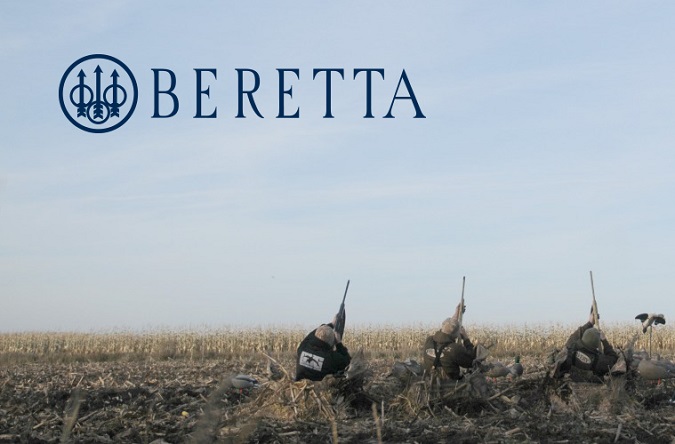 Everyone, even our Olympic champions, miss a shot now and then. Some of us miss more than others. It is easier to miss with a shotgun than you might think. Learning from a miss can teach you a lot about how to take the next shot, and let’s face it; there isn’t any shot more important than the next one.
Everyone, even our Olympic champions, miss a shot now and then. Some of us miss more than others. It is easier to miss with a shotgun than you might think. Learning from a miss can teach you a lot about how to take the next shot, and let’s face it; there isn’t any shot more important than the next one.
Mistaking the distance of the target is a prime way to miss. And with waterfowl and upland game, it isn’t the easiest thing in the world to measure because you’re dealing with fast-moving birds. One tactic you can do to work on judgment is to observe birds as much as possible. During a waterfowl hunt, I’ll set up decoys at specific yardages. It gives me a little reassurance that I know how far everything is in relation to where I am. Increasing your confidence reduces that chance that you’ll miss.
When upland hunting, try to keep some perspective on your range. It gets hard when you’re walking an open field for pheasants, but if you can keep something in line with you to judge range by, like a fence line, it’ll help greatly.
A turkey caused one of my worst misse s with a shotgun. I was an inexperienced turkey hunter, but somehow managed to call in two big toms. I carefully lined up on the lead bird and shot. Feathers flew, and I jumped up from my perch only to see both toms doing the full-tilt boogie back across the field.
s with a shotgun. I was an inexperienced turkey hunter, but somehow managed to call in two big toms. I carefully lined up on the lead bird and shot. Feathers flew, and I jumped up from my perch only to see both toms doing the full-tilt boogie back across the field.
How did I miss? In my second guessing, I made an even bigger mistake by telling some of my friends about it. It took the rest of spring, summer and well into the following waterfowl season to live it down. That was years ago, and they still bring it up on occasion. The real culprit was that I had misjudged the yardage.
The other thing you need to do is pattern your loads and shotgun. This is something I do every season and several times throughout. You have to know how that shot is coming out of the muzzle of your gun and how it reacts at all of the ranges at which you feel comfortable shooting. Patterning will help you determine your effective range and goes right back to that confidence building that is paramount to successful hunting.
Aside from misjudging the range, the biggest reason we miss is simply mechanical. It starts with how you mount the gun to your shoulder. You need to bring the gun up so that every time, the barrel aligns with your eye. It has to be a fluid motion that becomes instinctual. I know, you hear that a lot, but it is true, and it’s not as hard as you might think.
Let’s start with the basic mechanics. Square your shoulders toward the target and hold your gun more in front of you than across your body – that opens up your range of motion. It also allows you to follow the target with your body, as opposed to your arms. When you follow the target with your arms, you’re messing up the mount of your gun to your shoulder. By squaring off and moving your upper body with the target, your mount is rock solid all the way through the shot.
With your mount in order, the next issue that a lot of shooters have is taking their eye off the target. I’m a firm believer that the bead of my shotgun is there for practice only. By the time I’m shooting at something, I’m not even looking at it. I notice it in my peripheral vision, but my eyes are solidly on the target, and my body is moving in the follow-through.
My wife has a terrible time shooting clays. She misses almost all the time, and she knows it. She also knows why. She over thinks the shot each time and forgets to follow the target. When she stops thinking about it and just does it, she makes more shots. Now in the field, she’s a stone-cold killer. She focuses on the goose, or the duck, and quite often makes the shot. Don’t overthink your shot.
I had the opportunity to train some at Gunsite Academy in Paulden, Arizona. One of the main things they preach is locking your eyes on the target and bringing your gun into your “workspace.” Done correctly and through practice and your gun will be on target and ready for the shot without you having to take your eyes off the target.
What works for me might not work for you, so take this with a grain of salt. I do a lot of practice mounts with my shotgun in my basement. Just bringing it up to my shoulder repeatedly helps. Sometimes I will turn around and focus on something against the wall and bring the gun up. When I’m “on target” I then recheck my mount and the bead on the barrel is right where I want it to be.
With practice, you should be able to follow a target, mount your gun correctly, keep your eye on the target and shoot. You should never miss again. But you will. We all do. Sometimes you just miss. There are just some things we can’t control. Plus, no matter who you are, sometimes the excitement of the hunt just catches up to us, and we miss. I once told someone that I never actually miss; bird feathers are made of Kevlar and my shot simply bounced off. I had her going for a while.
